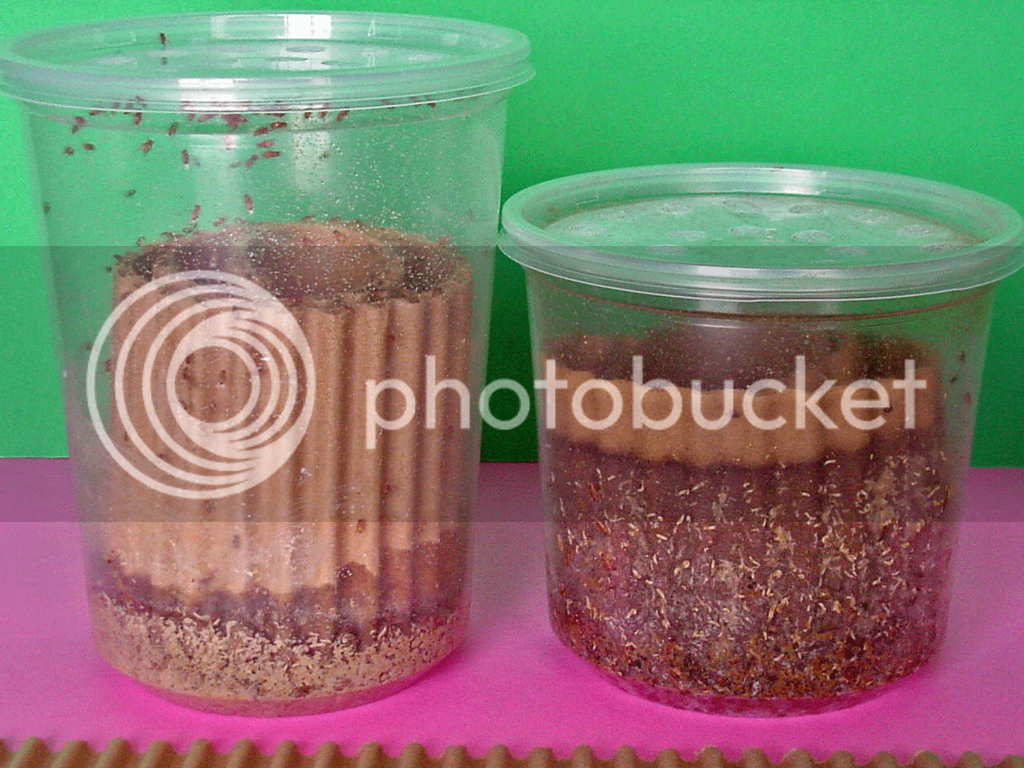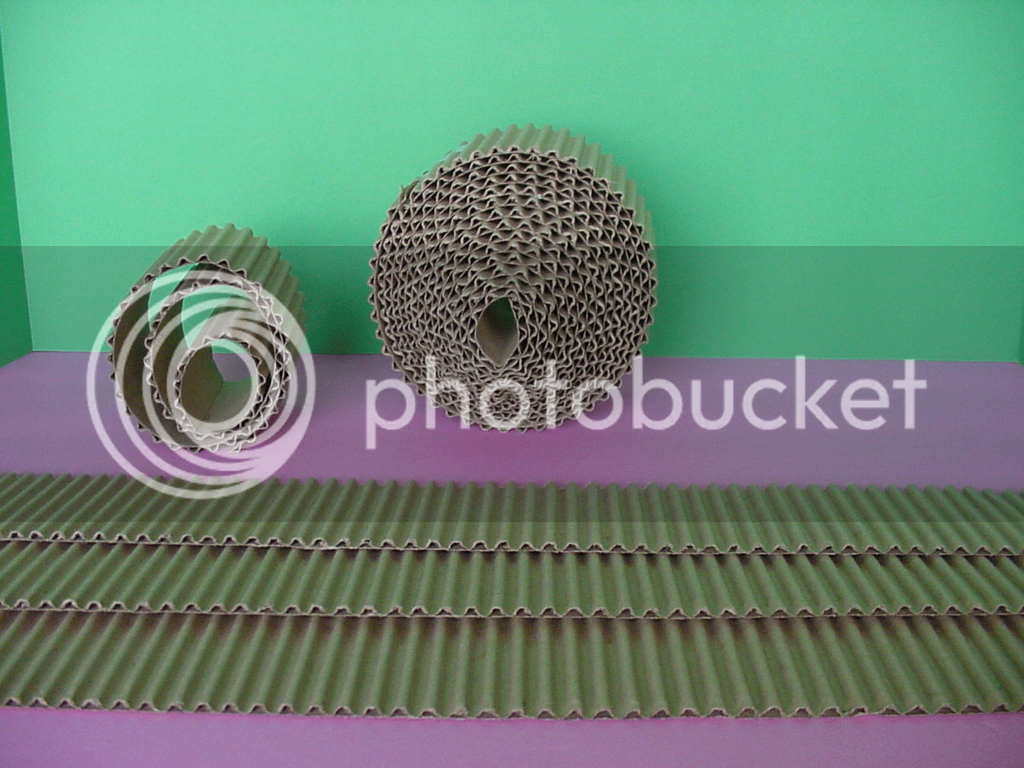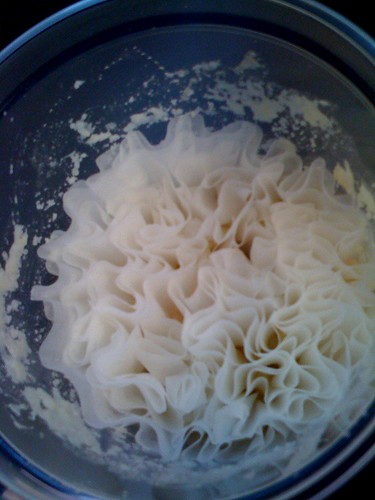K's looks nice, but I read that the more filters you use, the faster the media dries out, but I ain't knowin'.
I would assume, not confirmed yet, that unless you have a bunch of layers in there, that you don't need alot of perching/drying area for larva and pup's.
I've been reading a book on dart frog culturing, and the author goes into decent detail on fruit fly culturing.
A book authored by amanda and greg sihler, if you have an inkling to peruse it.
It may even be available at your local library, or through an inter-library loan.
They say that fruit flies like 78 degrees, and at 90 degrees and above the medium goes sterile, so keep them suckers cool.
They say at 10 days Mels will come to life, and 16 days the Hydei will have risen, if the culture is at 78 degrees.
The also say to can the cultures after 28 days cause mites and mold will reduce success and starting a new culture would be better, time wise. They also recommend starting cultures only from the first batch raised from a new culture, as the food will be nutritionally better, and the flies bigger. Sounds like the same info that's in Orin's sticky. Researched and confirmed, again.
The frog book suggests 1:1 water to vinegar though, to avoid mold blooms. They do mention, however, that Hydei cultures don't do well with this vinegar ratio.
The do mention that Larvae has more nutrients in them than the adult flies do. The tell how to harvest the larvae, not pupae, to feed to frogs.
They say to 'capture' escaped fruit flies to put a cup of vinegar with a few drops of dish soap in it in the room, and they will come, and not leave, the cup.
The mention that a piece of fruit in the bottom of the enclosure will attract flies that would otherwise be attempting escape while the enclosure is open. That the fruit also gives the flies a place to hover around and makes it easier for the predator, be it mantis or frog, to hang out and snatch a quick bite. We'll do lunch at the chunk o' apple 'round noonish, ribit?
This book also covers culturing springtales, and rice beetles, she loves you yaa yaa yaa, and phoenix worms, as well as crickets.
Incidently, they say poison dart frogs get their toxins from insects that they get in the wild that get the toxins from plants that they eat, in their natural habitat. That's why dart frogs arent' toxic in captivity. No frog lickin' down 'roun' these here parts...
Enjoy
 , told ya! Here some pics, the fruit fly cultures are all white with new maggots just starting to crawl up and the one on the right is where they are moving up the roll. Whats great about this, is the maggots crawl inside the wiggles in the roll and on the outside, giving them plenty of room and the cardboard soaks up all the extra water leaving the maggots a solid medium!
, told ya! Here some pics, the fruit fly cultures are all white with new maggots just starting to crawl up and the one on the right is where they are moving up the roll. Whats great about this, is the maggots crawl inside the wiggles in the roll and on the outside, giving them plenty of room and the cardboard soaks up all the extra water leaving the maggots a solid medium!
















































